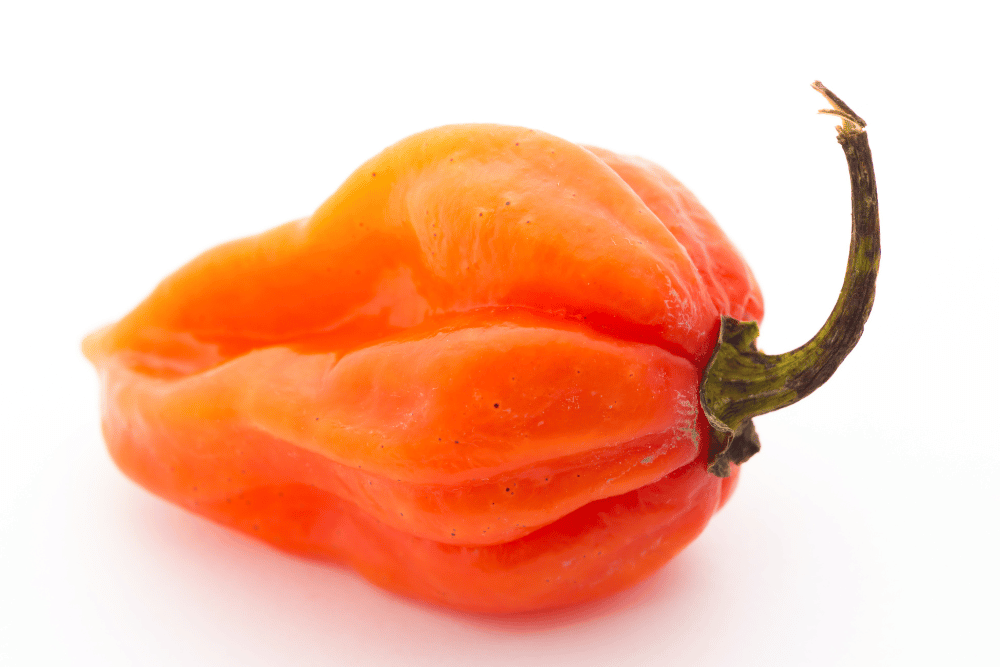Habanero peppers are scorching chiles with a delicious fruity flavor. The pepper's different varieties and unique versatility work well with Mexican, Latin, and Caribbean spicy foods and drinks, but they are popular worldwide for their ability to provide balanced heat and seasoning.
What Are Habanero Peppers?
The mighty habaneros are spicy peppers from the capsicum chinense variety. Their heat levels vary from pod to pod depending on the growing conditions, watering frequency, genetics, climatic conditions, and plant stress.
Habanero peppers are often confused with scotch bonnet chiles due to their similar heat level and flavor. Despite their underlying sweetness and fruity flavor, habanero peppers are pretty hot. The chile was named the hottest in 1999 by Guinness worlds records.
Like other capsicum chinense chiles like Trinidad Moruga scorpion, habaneros have a slow-burning heat that lingers on your throat for hours. If you can stand the spiciness, these chiles are the perfect pairing for tropical salsas, sauces, salads, and marinades.
Origin
Pronounced as haa-buh-NEH-row, habanero peppers are named after a Cuban city, La Habana (Spanish), or Havana in English. These hot chiles originated from the Amazon rainforest.
As the Spanish colonists traded widely around the world, they spread habanero seeds to different countries, including Mexico. Mexicans made the chiles an integral part of their cuisines and grew them exclusively.
Mexico’s Yucatan peninsula is the largest habanero producer, followed by Panama, Columbia, Costa Rica, Texas, and California. In the 18th century, Dutch botanist, Nikolaus Joseph Von Jacquin classified it as Capsicum Chinense due to its popularity in Chinese cuisines.
Color
There are several habanero varieties with unique colors. However, the standard orange habanero that most people are familiar with starts out green before aging into a vibrant red or orange hue.
Texture
Habanero peppers are smooth, waxy, and crunchy with creases and folds.
Taste
The typical habanero pepper is tropical, fruity, and sweet, with smoky, citrusy undertones. On top of their unique taste, the chiles produce a floral, apricot-like scent. These delicious flavors are evident in all habanero varieties.
Shape
The famous orange-red habanero has a shape mimicking a small, slightly elongated pod. In some varieties, habaneros look like small lanterns with slightly more squashed bodies.
Size
Habanero pepper pods are 1-3 inches long and 1-2.5 inches wide. With proper care and maintenance, a mature habanero pepper plant gets up to 4 feet tall.
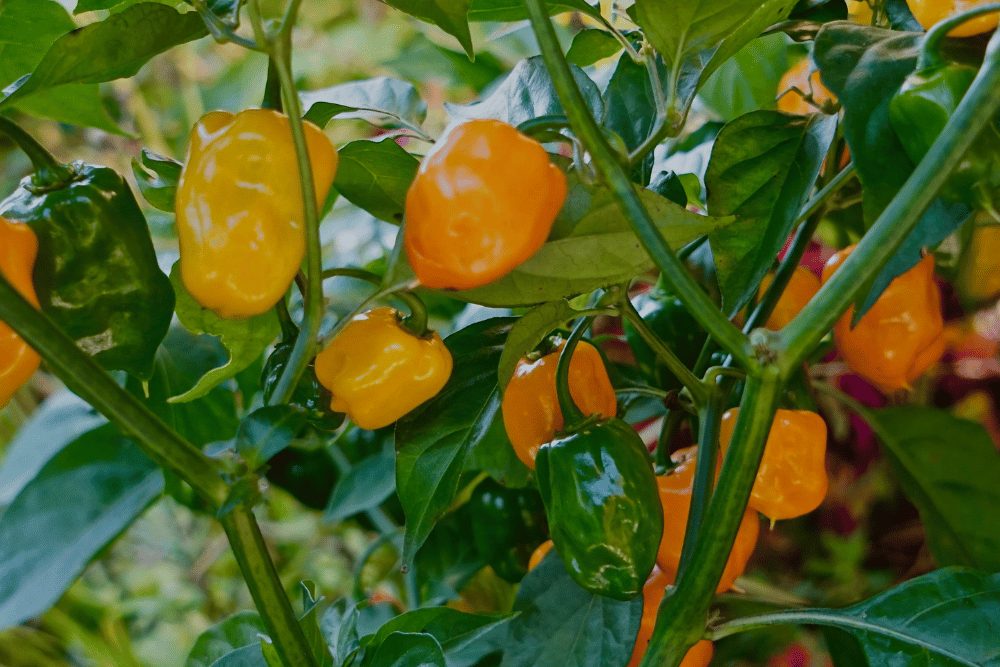
How Hot Are Habanero Peppers?
Standard orange habanero peppers are hot, ranging from 100,000 to 350,000 SHUs on the Scoville scale.
This heat puts it at par with its close relative scotch bonnet peppers. If you love habanero’s fruity, floral taste but can’t stand the heat, check out chile Habanadas (heatless habanero peppers!).
To put it in perspective, habanero chiles are 12-140 times spicier than the humble jalapenos. Poblano peppers (1,000-1,500 SHUs) are almost 200 times milder.
The super-hot bhut jolokia (ghost peppers) are over four times hotter than habaneros, while the title holder, Carolina reaper (2,200,000 SHUs), is six times hotter!
Are Habanero Peppers The Hottest Pepper In The World?
No. Habaneros held the Guinness world’s hottest pepper title in 1999, but they aren’t in the class of newer superhots. With over 2.2 million SHUs, Carolina reaper is the current Guinness world record certified hottest pepper.
Other heat giants include Trinidad Moruga scorpion (2,009,231 SHUs), 7 pot douglah (1,853,936 SHUs), and 7 pot primo (1,469,000 Scoville heat units). The Trinidad scorpion (Butch T) completes the top 5 eye-watering chiles list.
Other Varieties of Habaneros
Over 18 known habanero chili cultivars have varying heat levels, flavors, and unique colors.
- Black habanero (425,000-577,000 SHUs) – Also known as dark chocolate, Jamaican hot Choco, or chocolate habanero, the chiles have a dark brown color with a tapered shape.
- Caribbean red habanero (300,000-445,000 SHUs) – This Caribbean red pepper has a lantern shape and is 1-2 inches long.
- Peruvian white habanero (100,000-350,000 SHUs) – These heirloom peppers from Peru produce beautiful, 2-inch white peppers, making them excellent for cooking and ornamental purposes.
- Roatan pumpkin (100,000-500,000 SHUs) – With origins from the Roatan islands, this cultivar produces orange pepper pods resembling a pumpkin. The chiles are larger than other habanero peppers (3 inches) and spicier.
- Red Savina habanero (350,000-570,000 SHUs) – Red Savina is the hottest habanero variety. It’s thick-walled and flavorful, like the typical habanero chiles.
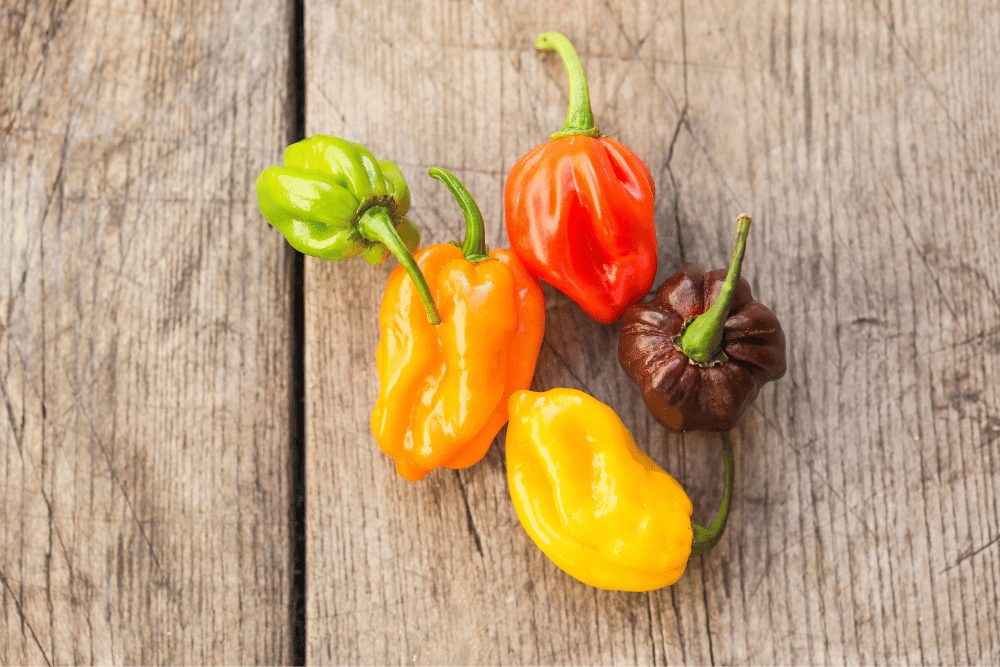
What Can You Do With Habanero Peppers?
Habanero peppers are fun to use in any dish where you want serious spicy and a subtle fruity flavor.
- Salsas – Fresh habaneros pair well with tropical fruits, making them excellent for making this delicious mango salsa.
- Fruit-based hot sauces – Add habanero chiles to other ingredients like garlic and onions for a sweet, fiery habanero hot sauce.
- Salad dressing – Use thinly sliced habanero pepper slices to fire your fresh fruit or vegetable salads.
- Pickling – These fruity peppers are also great as homemade pickles.
- Chutneys and jellies – Use these tasty hot peppers to spice and flavor fruit chutney or pepper jelly. It’s delicious served on crispy crackers smeared with cooling cream cheese.
- Spicy drinks and cocktails- To make fiery, sweet, refreshing drinks, soak a slice of habanero in your tequila or Mezcal.
Caution: When handling habanero chiles, wear gloves and goggles to protect your skin and eyes from capsaicin irritation.
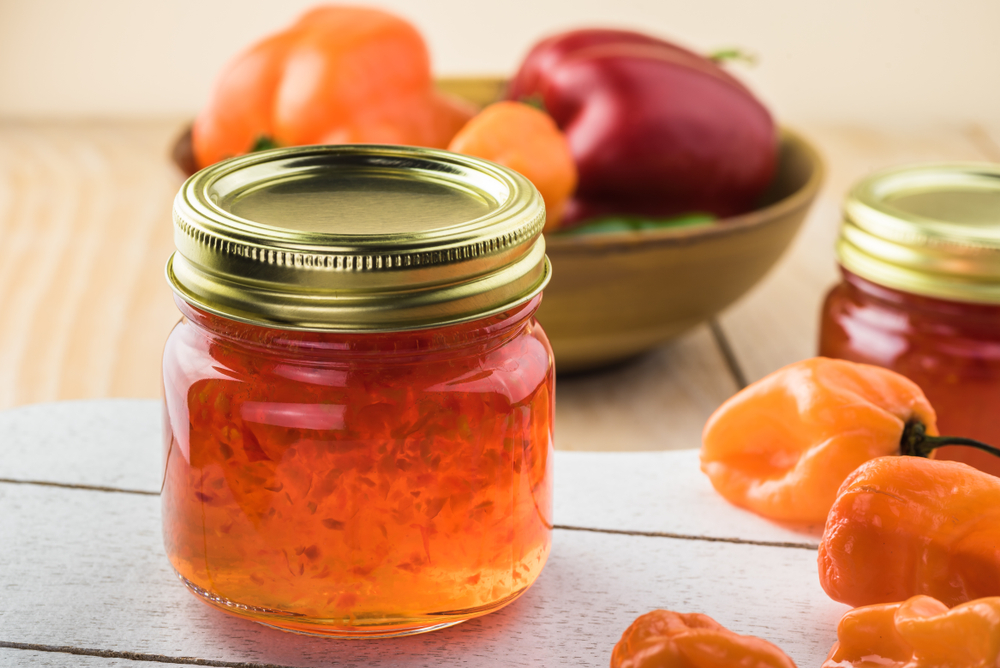
Can You Eat Habaneros Raw?
Yes! If you can handle the heat, raw peppers are the most nutritious. Raw habanero peppers have more vitamin C and macro-nutrients than cooked chiles. A single habanero contains 100 percent of your recommended vitamin C daily intake.
What’s The Difference Between Habaneros And Scotch Bonnet Peppers?
Scotch bonnets and habaneros are closely related but different in the following aspects:
- Size: Habanero chiles are 1-3 inches long, while scotch bonnets are 1.5-2 inches long.
- Shape: Habaneros are pod-like, whereas scotch bonnet peppers mimic tiny tam o’ shanter hats.
- Origin: Habanero peppers originated from the Amazon rain Forest to Mexico, while scotch bonnets have roots in Brazil (West Amazon Basin).
- Flavor: Both peppers are sweet, fruity, and floral. However, scotch bonnet chiles are sweeter than habaneros.
- Availability: Habanero peppers are popular and easy to find in most parts of the world. Scotch bonnets are more scarce and primarily found in areas near the Caribbean.
Where To Buy Habanero Peppers
You can easily find habanero peppers in grocery stores near you or supermarkets with a fresh produce aisle. Check out well-stocked gardening centers for the chiles too.
Additionally, buy seeds online from Amazon and Burpee and try growing your habanero peppers at home.
Tip: When buying fresh chiles, go for a firm, smooth outer skin.
Substitutes For Habanero Peppers
If you can’t find habaneros, a scotch bonnet is the best fit for chile habanero heat and fruity flavor. Additionally, any other habanero cultivar available can deliver the same taste as the typical orange one, but with a different heat level.
Red jalapeno and serrano chiles are excellent milder substitutes for young habanero peppers. Use more of these chiles to upgrade the heat level.
Rocotillo pepper is another good fit, despite it being almost 100 times milder. It has a habanero-like shape and flavor profile. Habanada pepper delivers the fruity floral taste of habanero chile with zero heat.
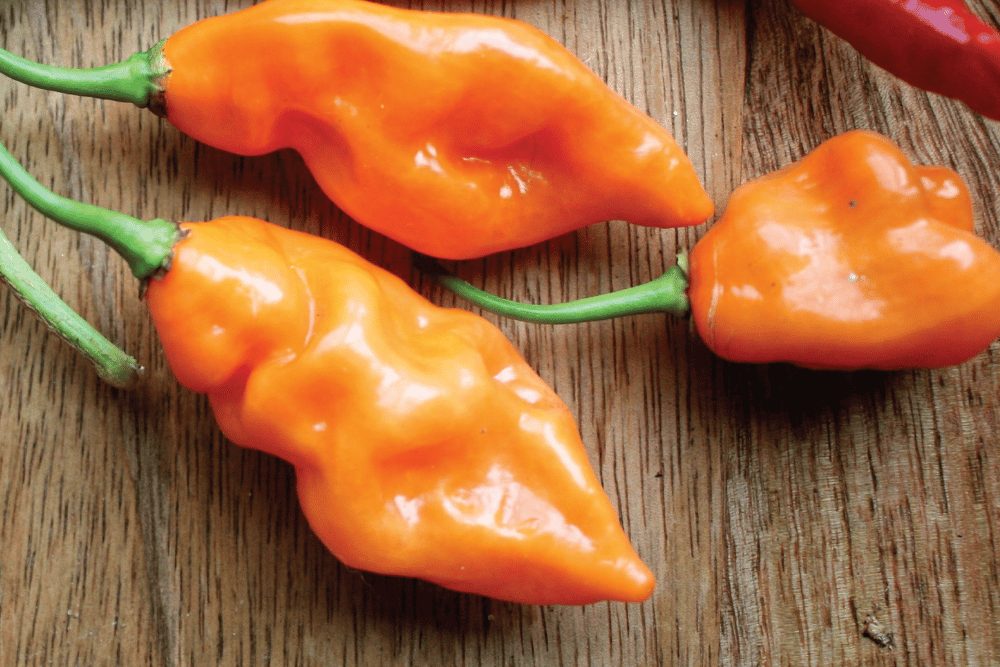
Can You Grow Habaneros?
Growing habanero peppers is easy as it does well in containers and home gardens. The chiles love hot weather, quality soil (with good P.H. and drainage), and full sun.
Under the right conditions, germination of habanero pepper seeds takes 7-10 days, while maturity is after 70-80 days. Wait for your pepper plant to develop 4-5 true leaves before transplanting outdoors (from 4-5 weeks).
Hot chiles like habanero plants are water-hungry. However, only water when necessary (usually once a week in most summer seasons). Over-watering during the fruiting stage may reduce your pepper’s capsaicin concentration, making it less spicy.

